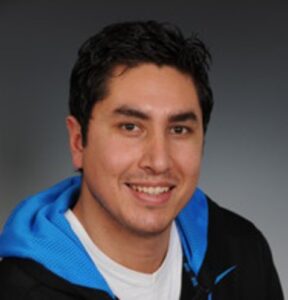Statistics and dynamics of plectonemes in braided structures
Braids composed by two intertwined filaments naturally arise in biological systems, such as during DNA replication [1] and in amyloid fibrils [2]. Interestingly, braids subject to a pulling force display a phase transition [3]: when the linking number between the two strands exceeds a critical number, the braid, initially straight, writhes in 3D forming structures known as plectonemes. Nowadays, single molecule experiments can easily investigate the physics behind such a transition and plectonemes diffusion along the braided structure [4].
In the last few years, we developed a polymer model which, combined with a stochastic field theory, allows to visualise plectonemes as structures interacting through phenomena typical of liquid-gas systems [5]. Moreover, a further application of the polymer model has allowed investigation into site-selection mechanisms of retroviruses into DNA braids revealing spatio-temporal correlations between consecutive integration events [6].
In this talk I will summarise our main results providing insights about polymer braids, their applications and possible future research areas.
[1] A. Mariezcurrena and F. Uhlmann. Genes & Development 31, 2151 (2017).
[2] C. Ionescu-Zanetti, R. Khurana, J. R. Gillespie, J. S. Petrick, L. C. Trabachino, L. J. Minert, S. A. Carter, and A. L. Fink. Proceedings of the National Academy of Sciences 96, 13175 (1999).
[3] G. Charvin, A. Vologodskii, D. Bensimon, and V. Croquette. Biophysical Journal 88, 4124 (2005).
[4] M. T. J. van Loenhout, M. V. de Grunt, and C. Dekker. Science 338, 94 (2012).
[5] G. Forte, M. Caraglio, D. Marenduzzo, and E. Orlandini. Physical Review E 99, 052503 (2019).
[6] G. Forte, D. Michieletto, D. Marenduzzo, and E. Orlandini. Journal of the Royal Society Interface 18, 20210229 (2021).
Leave a Comment
